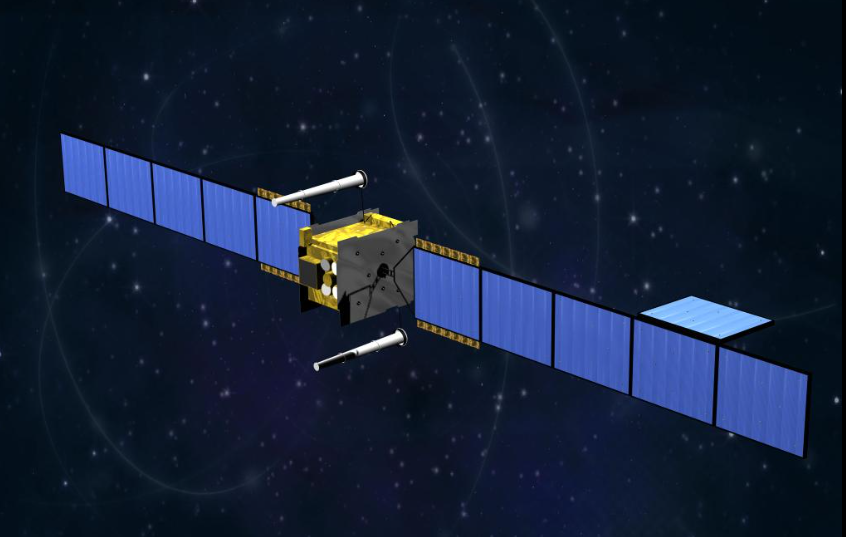
Artist's concept of Skynet 5.
RAF FAIRFORD, England—Airbus has begun building a team that will compete to produce the next generation of satellites for the UK’s Skynet communications network.
The UK’s emerging Skynet Enduring Capability (SKEC) is set to call on industry to produce a constellation of wideband and narrowband communications satellites to be procured through separate programs that will support the UK’s likely global communications needs.
No formal requirements for the satellites, their numbers or timelines for their service entry have been released. But Airbus, which is currently building the Skynet 6A satellite, is eager to secure the work and keep it in the UK.
“Skynet is a capability that the UK has operated independently, and one that the UK continues to design, build and support from the UK,” says Ben Bridge, Airbus Defense and Space’s executive vice president of global business, and chairman of Airbus Defense and Space UK. He spoke ahead of the Royal International Air Tattoo (RIAT) here.
He believes the company is the “best placed to talk about and lead the future development of Skynet,” having built the satellites and “nurtured and grown” the capability in the UK.
Recent years have seen the UK defense ministry open elements of the satellite communications effort to competition. While Airbus won the tender to build the £500 million ($650 million) Skynet 6A, the six-year contract to manage and operate the Skynet constellation—the £400 million Skynet Service Delivery Wrap contract—was snagged by UK engineering and services company Babcock, which will begin running the service in 2025. Meanwhile, other consortia have sprung up that could bid for the satellite build work.
The UK defense ministry wants the mix of narrowband- and wideband-capable satellites to reflect a growing need for connectivity in the future. The narrowband service will likely serve highly mobile units such as combat aircraft and ground units, since it can keep up with the movement of those systems, while the wideband capability that would be delivered through several medium-sized satellites is seen as more strategic and serving broadband needs such as those demanded by Queen Elizabeth-class aircraft carriers.
“This is not just about Airbus, and we don’t want it to be just about Airbus, the size that we have, the capabilities that we have, are something that can drill together that ecosystem in the UK and we’re very open and keen to work with smaller players to solve this capability question,” Bridge adds.
As part of its initial contacts with industry this year for the SKEC program, the UK defense ministry has been looking to industry support for ideas about future satellite technologies, exploitation of existing infrastructures and tools to deal with hostile threats to the spacecraft.
“Airbus’ approach is to build on the great foundation that we have here in the UK,” Bridge says. “We want to wrap in new technologies and bring on other partners to generate value to our supply chain. This is potentially a great moment for UK industry.”





